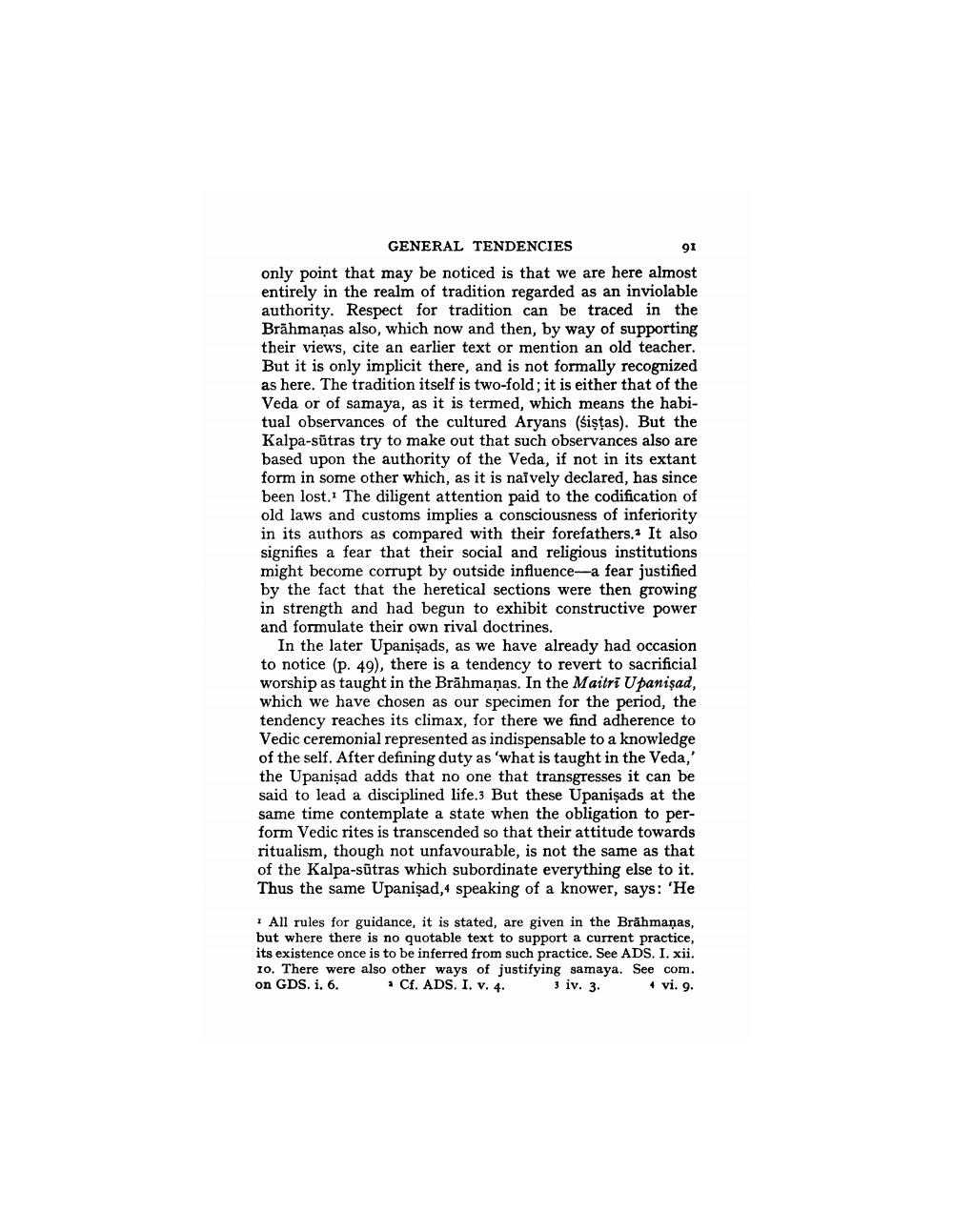________________
GENERAL TENDENCIES only point that may be noticed is that we are here almost entirely in the realm of tradition regarded as an inviolable authority. Respect for tradition can be traced in the Brāhmanas also, which now and then, by way of supporting their views, cite an earlier text or mention an old teacher. But it is only implicit there, and is not formally recognized as here. The tradition itself is two-fold; it is either that of the Veda or of samaya, as it is termed, which means the habitual observances of the cultured Aryans (sistas). But the Kalpa-sūtras try to make out that such observances also are based upon the authority of the Veda, if not in its extant form in some other which, as it is naively declared, has since been lost. The diligent attention paid to the codification of old laws and customs implies a consciousness of inferiority in its authors as compared with their forefathers. It also signifies a fear that their social and religious institutions might become corrupt by outside influence-a fear justified by the fact that the heretical sections were then growing in strength and had begun to exhibit constructive power and formulate their own rival doctrines.
In the later Upanişads, as we have already had occasion to notice (p. 49), there is a tendency to revert to sacrificial worship as taught in the Brāhmaṇas. In the Maitri Upanişad, which we have chosen as our specimen for the period, the tendency reaches its climax, for there we find adherence to Vedic ceremonial represented as indispensable to a knowledge of the self. After defining duty as 'what is taught in the Veda,' the Upanişad adds that no one that transgresses it can be said to lead a disciplined life. But these Upanişads at the same time contemplate a state when the obligation to perform Vedic rites is transcended so that their attitude towards ritualism, though not unfavourable, is not the same as that of the Kalpa-sūtras which subordinate everything else to it. Thus the same Upanişad,4 speaking of a knower, says: 'He
1 All rules for guidance, it is stated, are given in the Brāhmaṇas, but where there is no quotable text to support a current practice, its existence once is to be inferred from such practice. See ADS. I. xii. 10. There were also other ways of justifying samaya. See com. on GDS. i. 6.
Cf. ADS. I. v. 4. 3 iv. 3. 4 vi. 9.




